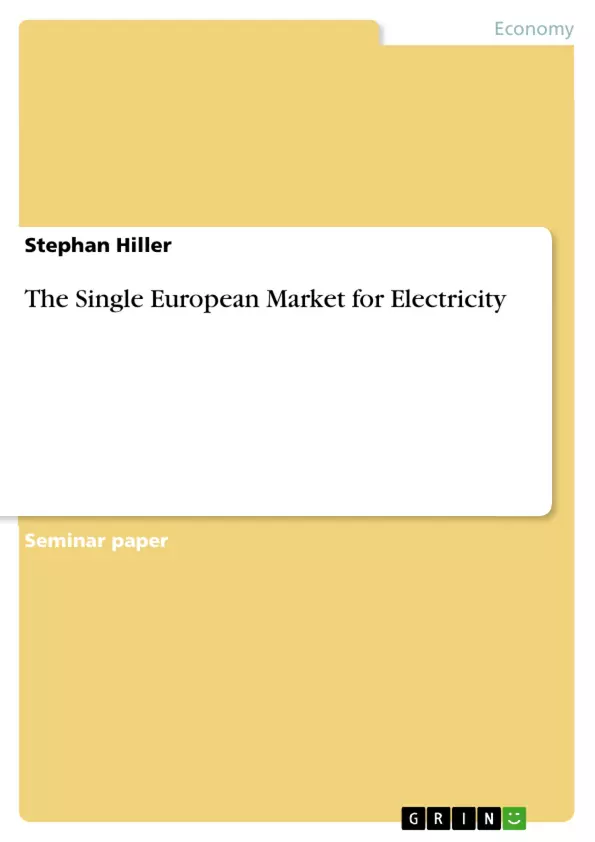Energy is one of nowadays most frequently discussed issues. It becomes a more and more crucial factor for growth and competitiveness in Europe as well as worldwide. Dependable energy services at reasonable prices for business and household customers are essential elements for the economic and social development in the European Union (EU). In this context, a well-functioning Single European Market (SEM) is Europe’s key to meet today’s three main challenges in the energy sector: competitiveness, sustainability and security of supply.
As a matter of fact, the way towards a SEM for energy is long and complex. A multitude of aspects play important roles. Outlining all of them would go far beyond the scope of this work. In consequence, this paper focuses on electricity only, leaving out the gas sector. Moreover, emphasis is put on the fundamental EU legislation and the development of the Regional Initiatives as a means to facilitate market integration. Topics of equal importance such as the technical requirements and prerequisites for the general market design had to be excluded from this composition.
Inhaltsverzeichnis (Table of Contents)
- The path towards the Single European Market for Electricity
- EU Legislation
- Regional Initiatives
- Current Status
- Achievements to Date
- Remaining Deficiencies and Obstacles
- Future Outlook
- Conclusion
Zielsetzung und Themenschwerpunkte (Objectives and Key Themes)
This paper examines the progress towards a Single European Market (SEM) for electricity, specifically focusing on EU legislation and regional initiatives. The paper aims to shed light on the development of the market, highlighting the challenges and opportunities involved.
- The historical development of the SEM for electricity, from early attempts to the EU Directives
- The role of EU legislation in shaping the market, focusing on the liberalization and integration of national markets
- The importance of regional initiatives in facilitating market integration
- Challenges and obstacles in achieving a truly integrated electricity market
- The future outlook for the SEM for electricity, including potential solutions for remaining challenges
Zusammenfassung der Kapitel (Chapter Summaries)
Chapter 1: This chapter provides an overview of the path towards the SEM for electricity, highlighting the historical development and the influence of EU legislation. It examines the key Directives that paved the way for liberalization and market integration, emphasizing the importance of non-discriminatory access to the electricity network.
Schlüsselwörter (Keywords)
The main keywords and topics covered in this paper include the Single European Market (SEM), electricity market integration, EU legislation, regional initiatives, liberalization, competition, transmission system operator (TSO), distribution system operator (DSO), and third party access.
- Citar trabajo
- Stephan Hiller (Autor), 2008, The Single European Market for Electricity, Múnich, GRIN Verlag, https://www.grin.com/document/127633



